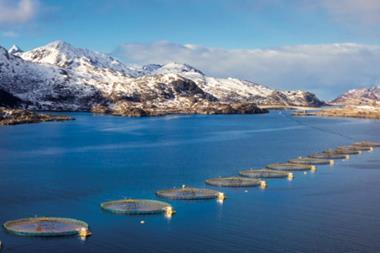Norway’s Kommunal Landspensjonskasse (KLP) has just approved a project aimed at finding ways the NOK805bn (€79bn) municipal pension fund can invest in the financing of national plans to move the country’s huge shipping sector to greener fuels – via government-backed structures.
Lars Erik Mangset, chief adviser climate change at KLP, told IPE: “We approved a project on the financing of green, maritime infrastructure last week.”
There is no specific target for the hoped-for financing investments, according to KLP, as it will depend on finding the right public-private structures.
However the pension fund, which has annual goals along the road to achieving net-zero carbon emissions from its investment portfolio by 2050, currently has a target to put NOK6bn a year into green investments.
The project’s work will centre on exploring financing cases for clean shipping fuel such as hydrogen and ammonia production and distribution, various applications of electrification – of ferries and ports, for example – and potentially more, he said.
“The focus is particularly on investigating possible public-private partnerships (PPPs) considering financing, such as the application of blended-finance structures,” he said.
The new project is part of an overall programme in Norway, led by insurer DNV, called The Green Shipping Programme (GSP).
This is a PPP with a stated aim of progressing the Norwegian government’s maritime strategies and plans, and the country’s goal of establishing “the world’s most efficient and environmentally-friendly shipping”.
GSP is being partly financed through the state budget as well as user fees from private companies, according to Mangset.
KLP’s new project aims to identify the need and potential for green, maritime infrastructure, after which financing cases will be drawn up.
This could involve applying the type of blended finance structures which are typically used for financing renewable energy in low-income countries, Mangset said.
“The PPP aspect is particularly important here, and, we think, the key to unlocking investment by institutional investors in areas that are very important for a green transition, but which are probably deemed high risk for such investors,” he noted.
KLP now needs to focus on recruiting key participants in the GSP to its project, he said, adding that some private-sector players had already confirmed, and early discussions had taken place with one government ministry.
KLP will be the project owner, and Mangset said he estimates the project’s actual work will kick off in two to three week’s time.
Blended finance investment is not new for KLP, though this planned new application of it will be.
“We started our blended finance ventures for about 10 years ago, and they are focused primarily on renewables in low-income countries, as well as within the OECD,” Mangset said.
“What is different here is that we are targeting a different political goal and hence ministry,” he stated.
The blended finance climate investments KLP is currently involved in are all tied to development goals – typically in sub-Saharan Africa or Latin America – but the green shipping financing relates to domestic climate policy, private sector policy and generally, Mangset said, “the big political question: How can Norway earn money and secure employment after the oil era?”
“Another difference is that instead of using blended finance structures to roll out proven and commercially competitive technology, such as wind and solar, in a high-risk market, the focus here is on unproven technology in a low-risk market,” he said.
“So it requires a new way of thinking, both for KLP and within political circles,” Mangset said.










